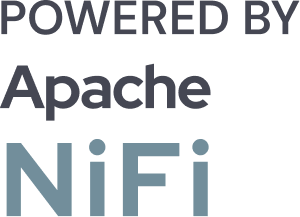How to Configure Role-Based Access Control in Data Flow Manager for NiFi Data Flow Deployment?
![]()

In an age where data pipelines are becoming increasingly complex, security and governance are of utmost importance. When dealing with Apache NiFi data flow deployments, ensuring that only authorized personnel can deploy or modify data flows becomes a critical aspect of managing data integration environments.
One way to achieve this security is by implementing Role-Based Access Control (RBAC). Data Flow Manager emerges as a robust solution to create, deploy, and promote NiFi flows in just a few minutes. Also, it comes with the feature to implement RBAC to ensure data integrity.
This blog will walk you through the benefits of RBAC, its configuration, and how you can use it to streamline your NiFi data flow deployment securely and efficiently with Data Flow Manager.
What is Role-Based Access Control (RBAC)?
Role-Based Access Control, or RBAC, is a way to manage who can do what inside a system, based on their role in your organization. Instead of giving every user full access, RBAC allows you to assign permissions based on job responsibilities. This keeps your system secure and organized.
In Data Flow Manager (DFM), RBAC makes sure that only the right people can perform sensitive tasks, like deploying or promoting Apache NiFi data flows across different environments, Development, Staging, and Production. It helps prevent unauthorized changes and ensures smooth, secure operations.
Key Components of RBAC in Data Flow Manager:
- Roles: A role is like a job title (e.g., Developer, Admin, QA). Each role comes with a specific set of permissions.
- Permissions: These are the actions a role can perform, like viewing, editing, or adding, and deleting NiFi data flows from clusters.
- Users: People in your team who are assigned roles. Once assigned, they automatically get the permissions linked to that role.

By setting up RBAC in Data Flow Manager, you ensure that everyone has the right access – nothing more, nothing less.
Why Implement RBAC in Data Flow Manager?

Managing NiFi data flows without robust access control can expose your organization to multiple risks:
- Unauthorized Changes: Risk of unapproved or accidental NiFi data flow deployments.
- Lack of Accountability: Hard to trace who made changes, which may affect auditing and compliance.
- Inconsistent Deployments: Without clear access control, there could be mistakes in promoting flows to different environments, causing disruptions.
By integrating RBAC into Data Flow Manager, you ensure that:
- Only authorized personnel have the right to deploy or promote NiFi data flows.
- Auditability is maintained by keeping track of all user actions.
- Operational efficiency is enhanced by streamlining roles and responsibilities.

Setting Up RBAC in Data Flow Manager
Configuring RBAC in Data Flow Manager allows organizations to define who can access or modify data flows and their promotions across different environments.
Here’s how you can set it up effectively:
1. Define User Roles
First, determine the roles within your organization that need access to Data Flow Manager and assign them specific permissions. Common roles include:
- Admin: Full access to manage, modify, and promote flows across all environments.
- Developer: Can promote flows from Development to Staging, and manage flow configurations.
- Viewer: Read-only access to view flow logs and statuses without permission to modify anything.
- QA Engineer: Responsible for verifying flows in the Staging environment, with no access to Production.
How to add a new user role in Data Flow Manager?
To add a new user role:
- Go to Manage Roles present in the top right corner of the Roles & Permissions tab.

- Click the Add Role button.

- Enter the role name and click Submit.

- The new role will be added to the list.

2. Assign Permissions to Roles
Each role must have permissions tied to the tasks they should be able to perform. After creating new roles, assign them to users with different permissions, ensuring that they have appropriate read or write access to Data Flow Manager’s certain menus as well as clusters.

Role Hierarchies in RBAC
Some systems, including Data Flow Manager, support role hierarchies. This means that higher-level roles (like Admin) inherit the permissions of lower-level roles (like Developer or Viewer). Implementing role hierarchies can simplify administration and ensure consistency in user permissions.
For example:
- Admin Role: Full access across all environments, including the ability to promote flows and modify configurations.
- Developer Role: Limited to certain menus of Data Flow Manager (e.g., User Management, Roles & Permissions, etc.).
- Viewer Role: Access to read logs and view the status of NiFi data flow deployments and promotions, but no edit rights.
Enforcing RBAC in NiFi Data Flow Deployment Pipelines
Incorporating RBAC within your NiFi data flow deployment process helps enforce security and streamline operations by ensuring that:
- Only authorized users can deploy and promote NiFi data flows from one environment to the other.
- Audit trails of all flow deployments are recorded, enabling better compliance tracking and issue resolution.
Best Practices for RBAC Configuration
1. Adopt the Principle of Least Privilege
Ensure that users only have access to the data and operations that are necessary for their job role. Limiting permissions minimizes the potential for errors and malicious actions.
2. Periodically Review Roles and Permissions
As organizations grow and evolve, it’s essential to periodically review and adjust roles and permissions to align with changing responsibilities. For example, if a developer moves to a new role or project, their permissions should be updated accordingly.
3. Leverage Auditing and Logging
Make sure that every user action, from promoting flows to viewing logs, is logged and auditable. This is crucial for troubleshooting and meeting compliance standards.

Security Considerations with RBAC
Implementing RBAC is not only about managing access but also ensuring that NiFi data flow deployments are secure and compliant. By keeping this in mind, Data Flow Manager offers:
- Integration with SSO (Single Sign-On) and LDAP for centralized authentication.
- Encryption of sensitive data being promoted between environments.
- Audit logs that track all user actions, ensuring a secure, traceable process.
Conclusion
Data Flow Manager comes with built-in Role-Based Access Control (RBAC) to ensure that only authorized individuals can deploy NiFi data flows. By defining user roles, assigning appropriate permissions, and leveraging RBAC in multi-environment deployments, you can greatly enhance the security and compliance of your data integration workflows.
By using RBAC, you can create a well-structured access control framework, ensuring your flows are promoted safely, efficiently, and in accordance with your organization’s governance policies.
![]()

